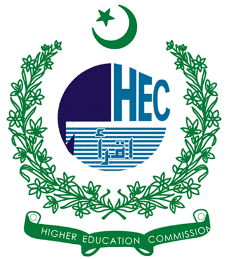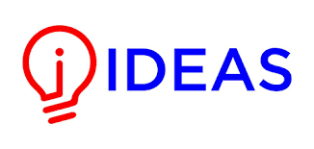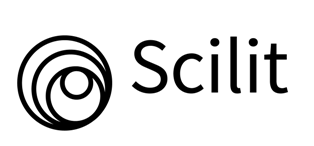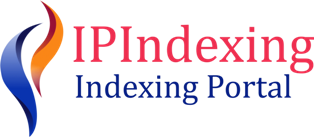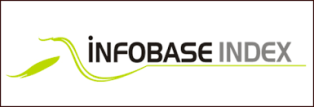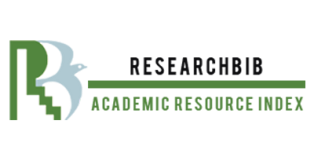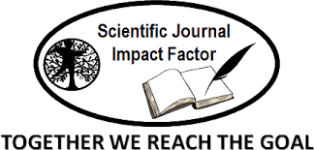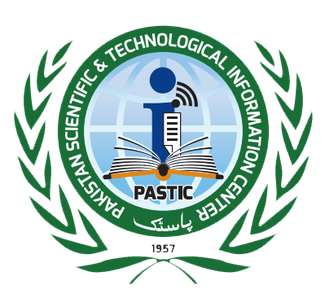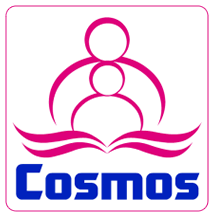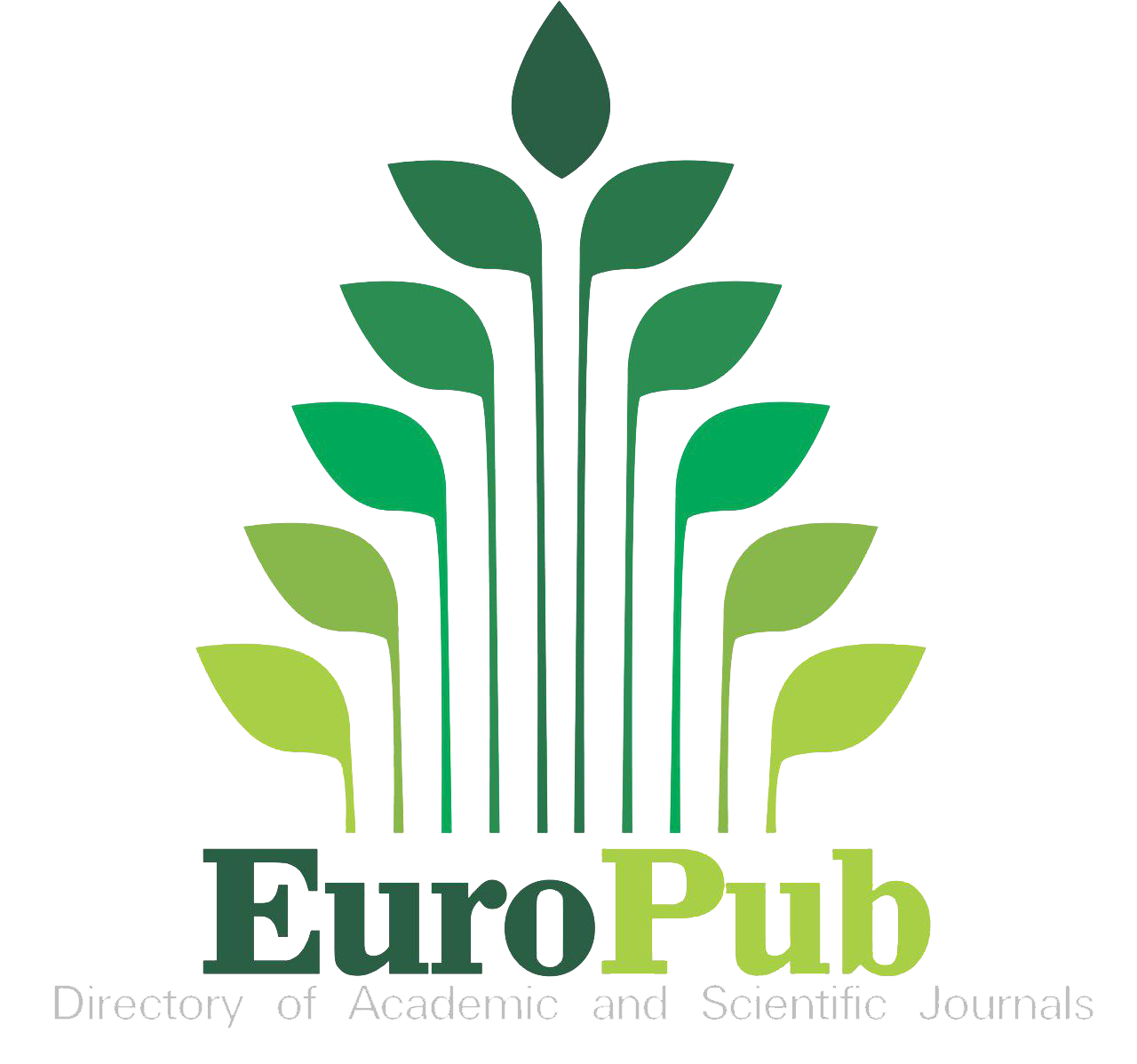Framework for Modeling Risk Factors in Green Agile Software Development for GSD Vendors
Keywords:
Agile software development, Green and sustainable software, Risk factors, Empirical study, Systematic literature reviewAbstract
In the last decades, agile methodologies are commonly employed to develop and deliver valuable software, with high user satisfaction at a comparatively low cost. However in recent years, the emergence of Green Software Engineering has necessitated that software developers prioritize the development of Green And Sustainable Software (GSS). Green software development is about developing and utilizing software with restricted energy and computing resources. In recent years, as the application of Global Software Development (GSD), software engineers have applied agile methods for fast, interactive, and green software development. However, such adoption of agile methods poses certain risks. The contribution of this study is two-fold. First, it identifies 8 Risk Factors (RFs), through a Systematic Literature Review (SLR), in which 42 relevant papers are identified and reviewed. The identified RFs need to be avoided by the GSD vendors while using agile methods to deliver GSS. Second, the findings of the SLR study are empirically validated through a questionnaire survey from 106 GSD experts belonging to 25 disparate countries. The results of the SLR and survey were compared and analyzed through a two-proportion Z test using R, which shows some significant variation for some RFs. Lastly, a framework for modeling structural association among RFs was established using an interpretive structural modeling approach. Research results illustrate that the outcomes of our industrial survey are mostly coherent with the SLR findings. Future, research should focus on developing predictive models using Artificial Intelligence (AI) and Machine Learning (ML) to analyze project data in real-time, promoting proactive decision-making for GSS development.
References
M. Kuhrmann et al., “What Makes Agile Software Development Agile?,” IEEE Trans. Softw. Eng., vol. 48, no. 9, pp. 3523–3539, Sep. 2022, doi: 10.1109/TSE.2021.3099532.
A. M. & Y. I. Alzoubi, “Structured software development versus agile software development: a comparative analysis,” Int. J. Syst. Assur. Eng. Manag., vol. 14, pp. 1504–1522, 2023, doi: https://doi.org/10.1007/s13198-023-01958-5.
M. P. Adam Alami, Oliver Krancher, “The journey to technical excellence in agile software development,” Inf. Softw. Technol., vol. 150, p. 106959, 2022, doi: https://doi.org/10.1016/j.infsof.2022.106959.
J. Sheffield and J. Lemétayer, “Factors associated with the software development agility of successful projects,” Int. J. Proj. Manag., vol. 31, no. 3, pp. 459–472, Apr. 2013, doi: 10.1016/J.IJPROMAN.2012.09.011.
I. L. I. Alina-Mădălina GHEORGHE, Ileana Daniela GHEORGHE, “Agile Software Development,” Inform. Econ., vol. 24, no. 2, 2020, doi: 10.24818/issn14531305/24.2.2020.08.
K.-J. S. Ronnie de Souza Santos, Paul Ralph, Arham Arshad, “Distributed Scrum: A Case Meta-Analysis,” ACM Comput. Surv., vol. 56, no. 4, 2023, doi: 10.1145/3626519.
K. Duehr, P. Efremov, J. Heimicke, E. M. Teitz, F. Ort, and A. Weissenberger-Eibl, Marion, Albers, “THE POSITIVE IMPACT OF AGILE RETROSPECTIVES ON THE COLLABORATION OF DISTRIBUTED DEVELOPMENT TEAMS – A PRACTICAL APPROACH ON THE EXAMPLE OF BOSCH ENGINEERING GMBH,” Proc. Des. Soc., vol. 1, pp. 3071–3080, 2021, doi: 10.1017/pds.2021.568.
M. Dick, J. Drangmeister, E. Kern, and S. Naumann, “Green software engineering with agile methods,” 2013 2nd Int. Work. Green Sustain. Software, GREENS 2013 - Proc., pp. 78–85, 2013, doi: 10.1109/GREENS.2013.6606425.
M. D. Eva Kern, Stefan Naumann, Achim Guldner, “Green software and green software engineering - definitions, measurements, and quality aspects,” Conf. First Int. Conf. Inf. Commun. Sustain., 2013, [Online]. Available: https://www.researchgate.net/publication/272086338_Green_software_and_green_software_engineering_-_definitions_measurements_and_quality_aspects
L. O. F. Ugochukwu Okwudili Matthew, Olasubomi Asuni, “Green Software Engineering Development Paradigm: An Approach to a Sustainable Renewable Energy Future,” Adv. Softw. Eng. Through AI, Fed. Learn. Large Lang. Model., vol. 14, pp. 281–29, 2024, doi: 10.4018/979-8-3693-3502-4.ch018.
T. N. Nchofoung and S. A. Asongu, “ICT for sustainable development: Global comparative evidence of globalisation thresholds,” Telecomm. Policy, vol. 46, no. 5, p. 102296, Jun. 2022, doi: 10.1016/J.TELPOL.2021.102296.
C. C. Venters et al., “Sustainable software engineering: Reflections on advances in research and practice,” Inf. Softw. Technol., vol. 164, p. 107316, Dec. 2023, doi: 10.1016/J.INFSOF.2023.107316.
“(PDF) GREEN SOFTWARE ENGINEERING PROCESS : MOVING TOWARDS SUSTAINABLE SOFTWARE PRODUCT DESIGN.” Accessed: Feb. 02, 2025. [Online]. Available: https://www.researchgate.net/publication/276146350_GREEN_SOFTWARE_ENGINEERING_PROCESS_MOVING_TOWARDS_SUSTAINABLE_SOFTWARE_PRODUCT_DESIGN
L. Ardito, G. Procaccianti, M. Torchiano, and A. Vetrò, “Understanding green software development: A conceptual framework,” IT Prof., vol. 17, no. 1, pp. 44–50, Jan. 2015, doi: 10.1109/MITP.2015.16.
“A green model for sustainable software engineering.” Accessed: Feb. 02, 2025. [Online]. Available: https://www.researchgate.net/publication/285762532_A_green_model_for_sustainable_software_engineering
S. Naumann, E. Kern, M. Dick, and T. Johann, “Sustainable Software Engineering: Process and Quality Models, Life Cycle, and Social Aspects,” Adv. Intell. Syst. Comput., vol. 310, pp. 191–205, 2015, doi: 10.1007/978-3-319-09228-7_11.
S. Wang, H. Chen, and W. Shi, “SPAN: A software power analyzer for multicore computer systems,” Sustain. Comput. Informatics Syst., vol. 1, no. 1, pp. 23–34, Mar. 2011, doi: 10.1016/J.SUSCOM.2010.10.002.
“GreenRM: Reference model for sustainable software development | Request PDF.” Accessed: Feb. 02, 2025. [Online]. Available: https://www.researchgate.net/publication/290559298_GreenRM_Reference_model_for_sustainable_software_development
F. Albertao, “Sustainable software development,” Harnessing Green IT, pp. 63–83, 2012.
“Optimization of Operating Systems towards Green Computing | Request PDF.” Accessed: Feb. 02, 2025. [Online]. Available: https://www.researchgate.net/publication/220651916_Optimization_of_Operating_Systems_towards_Green_Computing
C. T. D. Lo and K. Qian, “Green computing methodology for next generation computing scientists,” Proc. - Int. Comput. Softw. Appl. Conf., pp. 250–251, 2010, doi: 10.1109/COMPSAC.2010.31.
K. Erdélyi, “Special factors of development of green software supporting eco sustainability,” SISY 2013 - IEEE 11th Int. Symp. Intell. Syst. Informatics, Proc., pp. 337–340, 2013, doi: 10.1109/SISY.2013.6662597.
B. Nikolic, J. Bachrach, E. Alon, K. Asanovic, and D. Patterson, “Specialization for energy efficiency using agile development,” 2015 4th Berkeley Symp. Energy Effic. Electron. Syst. E3S 2015 - Proc., Nov. 2015, doi: 10.1109/E3S.2015.7336777.
S. Aguado, R. Alvarez, and R. Domingo, “Model of efficient and sustainable improvements in a lean production system through processes of environmental innovation,” J. Clean. Prod., vol. 47, pp. 141–148, May 2013, doi: 10.1016/J.JCLEPRO.2012.11.048.
D. Spinellis, “Sustainable Software Development: An Agile Perspective,” Addison-Wesley Prof., vol. 4, no. 10, p. 49, 2005, doi: https://doi.org/10.1145/1189276.1189292.
S. A. Mcxin Tee, Rusli Abdullah, “A Systematic Literature Review of Green Software Development in Collaborative Knowledge Management Environment,” Study Pract., 2015, doi: 10.18535/ijact.
S. Jalali and C. Wohlin, “Agile practices in global software engineering - A systematic map,” Proc. - 5th Int. Conf. Glob. Softw. Eng. ICGSE 2010, pp. 45–54, 2010, doi: 10.1109/ICGSE.2010.14.
A. Danait, “Agile offshore techniques - A case study,” Proc. - Agil. Confernce 2005, vol. 2005, pp. 214–217, 2005, doi: 10.1109/ADC.2005.9.
L. Ahuja and R. Priyadarshi, “Agile approaches towards Global Software Engineering,” 2015 4th Int. Conf. Reliab. Infocom Technol. Optim. Trends Futur. Dir. ICRITO 2015, Dec. 2015, doi: 10.1109/ICRITO.2015.7359249.
M. N. REHAN AKBAR, MUHAMMAD HARIS, “Agile Framework for Globally Distributed Development Environment (The DAD Model),” 8th WSEAS Int. Conf. Appl. INFORMATICS Commun., pp. 20–22, 2008, [Online]. Available: https://www.researchgate.net/profile/Rehan-Akbar-2/publication/228745285_Agile_framework_for_globally_distributed_development_environment_the_DAD_model/links/5ae15cdf458515c60f65fe2c/Agile-framework-for-globally-distributed-development-environment-the-DAD
C.-T. C. Hsieh C.-Y., “Patterns for Continuous Integration Builds in Cross-Platform Agile Software Development,” J. Inf. Sci. Eng., vol. 31, no. 3, pp. 897–924, 2015, [Online]. Available: https://www.researchgate.net/publication/283521886_Patterns_for_Continuous_Integration_Builds_in_Cross-Platform_Agile_Software_Development
N. and S. U. K. Rashid, “Green-agile maturity model (GAMM) for global software development (GSD) vendors,” Sci. Int., vol. 26, no. 5, pp. 2041–2043, 2014.
M. Ilyas and S. U. Khan, “Software integration in global software development: Challenges for GSD vendors,” J. Softw. Evol. Process, vol. 29, no. 8, p. e1875, Aug. 2017, doi: 10.1002/SMR.1875.
A. A. Khan, J. Keung, M. Niazi, S. Hussain, and A. Ahmad, “Systematic literature review and empirical investigation of barriers to process improvement in global software development: Client–vendor perspective,” Inf. Softw. Technol., vol. 87, pp. 180–205, Jul. 2017, doi: 10.1016/J.INFSOF.2017.03.006.
M. Niazi et al., “Challenges of project management in global software development: A client-vendor analysis,” Inf. Softw. Technol., vol. 80, pp. 1–19, Dec. 2016, doi: 10.1016/J.INFSOF.2016.08.002.
P. Mikalef, I. O. Pappas, J. Krogstie, and M. Giannakos, “Big data analytics capabilities: a systematic literature review and research agenda,” Inf. Syst. E-bus. Manag., vol. 16, no. 3, pp. 547–578, Aug. 2018, doi: 10.1007/S10257-017-0362-Y/METRICS.
R. Jabangwe, H. Edison, and A. N. Duc, “Software engineering process models for mobile app development: A systematic literature review,” J. Syst. Softw., vol. 145, pp. 98–111, Nov. 2018, doi: 10.1016/J.JSS.2018.08.028.
G. Carrera-Rivera, A., Ochoa, W., Larrinaga, F., & Lasa, “How-to conduct a systematic literature review: A quick guide for computer science research,” MethodsX, vol. 9, no. 1, p. 101895, 2022, doi: 10.1016/j.mex.2022.101895.
S. U. Khan, M. Niazi, and R. Ahmad, “Factors influencing clients in the selection of offshore software outsourcing vendors: An exploratory study using a systematic literature review,” J. Syst. Softw., vol. 84, no. 4, pp. 686–699, Apr. 2011, doi: 10.1016/J.JSS.2010.12.010.
I. Inayat, S. S. Salim, S. Marczak, M. Daneva, and S. Shamshirband, “A systematic literature review on agile requirements engineering practices and challenges,” Comput. Human Behav., vol. 51, pp. 915–929, Oct. 2015, doi: 10.1016/J.CHB.2014.10.046.
S. Mahmood, S. Anwer, M. Niazi, M. Alshayeb, and I. Richardson, “Identifying the factors that influence task allocation in global software development: Preliminary results,” ACM Int. Conf. Proceeding Ser., vol. 27-29-April-2015, Apr. 2015, doi: 10.1145/2745802.2745831.
N. M. Mohammed, M. Niazi, M. Alshayeb, and S. Mahmood, “Exploring software security approaches in software development lifecycle: A systematic mapping study,” Comput. Stand. Interfaces, vol. 50, pp. 107–115, Feb. 2017, doi: 10.1016/J.CSI.2016.10.001.
M. Bano and D. Zowghi, “A systematic review on the relationship between user involvement and system success,” Inf. Softw. Technol., vol. 58, pp. 148–169, Feb. 2015, doi: 10.1016/J.INFSOF.2014.06.011.
M. Niazi, “A comparative study of software process improvement implementation success factors,” J. Softw. Evol. Process, vol. 27, no. 9, pp. 700–722, Sep. 2015, doi: 10.1002/SMR.1704.
M. Niazi, “Do Systematic Literature Reviews Outperform Informal Literature Reviews in the Software Engineering Domain? An Initial Case Study,” Arab. J. Sci. Eng., vol. 40, no. 3, pp. 845–855, Mar. 2015, doi: 10.1007/S13369-015-1586-0/METRICS.
M. Niazi, S. Mahmood, M. Alshayeb, A. M. Qureshi, K. Faisal, and N. Cerpa, “Toward successful project management in global software development,” Int. J. Proj. Manag., vol. 34, no. 8, pp. 1553–1567, Nov. 2016, doi: 10.1016/J.IJPROMAN.2016.08.008.
S. and S. U. K. Ali, “Systematic literature review protocol for software outsourcing partnership (SOP).,” IOSR J. Comput. Eng., vol. 2, 2012, doi: 10.9790/0661-0210818.
and A. U. A. Yaseen, M., S.U. Khan, “SOFTWARE MULTI-SOURCING RISKS MANAGEMENT FROM VENDOR’S PERSPECTIVE: A SYSTEMATIC LITERATURE REVIEW PROTOCOL,” Gomal Univ. J. Res., vol. 29, no. 2, 2013, [Online]. Available: http://www.gujr.com.pk/index.php/GUJR/article/view/238
B. Kitchenham, O. Pearl Brereton, D. Budgen, M. Turner, J. Bailey, and S. Linkman, “Systematic literature reviews in software engineering - A systematic literature review,” Inf. Softw. Technol., vol. 51, no. 1, pp. 7–15, Jan. 2009, doi: 10.1016/j.infsof.2008.09.009.
S. U. Khan, M. Niazi, and R. Ahmad, “Empirical investigation of success factors for offshore software development outsourcing vendors,” IET Softw., vol. 6, no. 1, pp. 1–15, Feb. 2012, doi: 10.1049/IET-SEN.2010.0038.
M. M. and S. L. Ahmed, “A Systematic Literature Review on Challenges in Service Oriented Software Engineering,” Int. J. Softw. Eng. Its Appl., vol. 9, no. 6, pp. 173–186, 2015.
V. Raci and R. Shankar, “Analysis of interactions among the barriers of reverse logistics,” Technol. Forecast. Soc. Change, vol. 72, no. 8, pp. 1011–1029, Oct. 2005, doi: 10.1016/J.TECHFORE.2004.07.002.
D. W. Malone, “An Introduction to the Application of Interpretive Structural Modeling,” Proc. IEEE, vol. 63, no. 3, pp. 397–404, 1975, doi: 10.1109/PROC.1975.9765.
M. D. Singh, R. Shankar, R. Narain, and A. Agarwal, “An interpretive structural modeling of knowledge management in engineering industries,” J. Adv. Manag. Res., vol. 1, no. 1, pp. 28–40, Oct. 2003, doi: 10.1108/97279810380000356/FULL/XML.
R. W. Hawthorne and A. P. Sage, “On applications of interpretive structural modeling to higher education program planning,” Socioecon. Plann. Sci., vol. 9, no. 1, pp. 31–43, Feb. 1975, doi: 10.1016/0038-0121(75)90039-7.
G. Kannan and A. N. Haq, “Analysis of interactions of criteria and sub-criteria for the selection of supplier in the built-in-order supply chain environment,” Int. J. Prod. Res., vol. 45, no. 17, pp. 3831–3852, Sep. 2007, doi: 10.1080/00207540600676676.
V. R. Pramod and D. K. Banwet, “ISM for understanding the enablers of telecom service supply chain,” Int. J. Bus. Excell., vol. 8, no. 5, pp. 537–565, 2015, doi: 10.1504/IJBEX.2015.071277.
L. Shen, X. Song, Y. Wu, S. Liao, and X. Zhang, “Interpretive Structural Modeling based factor analysis on the implementation of Emission Trading System in the Chinese building sector,” J. Clean. Prod., vol. 127, pp. 214–227, Jul. 2016, doi: 10.1016/J.JCLEPRO.2016.03.151.
A. Kumar and G. Dixit, “An analysis of barriers affecting the implementation of e-waste management practices in India: A novel ISM-DEMATEL approach,” Sustain. Prod. Consum., vol. 14, pp. 36–52, Apr. 2018, doi: 10.1016/J.SPC.2018.01.002.
S. Ali and S. U. Khan, “Critical success factors for software outsourcing partnership (SOP): A systematic literature review,” Proc. - 2014 IEEE 9th Int. Conf. Glob. Softw. Eng. ICGSE 2014, pp. 153–162, Oct. 2014, doi: 10.1109/ICGSE.2014.12.
S. U. Khan and M. Niazi, “Critical Challenges in Offshore Software Development Outsourcing: An Empirical Study,” Softw. Eng. / 781 Control Appl., pp. 29–36, Jul. 2012, doi: 10.2316/P.2012.780-019.
M. A. K. M. Mohankumar, “Green based Software Development Life Cycle Model for Software Engineering,” Indian J. Sci. Technol., vol. 9, no. 32, pp. 1–8, 2016, doi: 10.17485/ijst/2016/v9i32/88499.
D. Chang, C. K. M. Lee, and C. H. Chen, “Review of life cycle assessment towards sustainable product development,” J. Clean. Prod., vol. 83, pp. 48–60, Nov. 2014, doi: 10.1016/J.JCLEPRO.2014.07.050.
A. Eman, “Impact of Agile Methodology on Software Development,” Comput. Inf. Sci., vol. 8, no. 2, pp. 9–9, 2024, doi: 10.5539/cis.v8n2p9.
C. Calero, M. Á. Moraga, M. F. Bertoa, and L. Duboc, “Green Software and Software Quality,” Green Softw. Eng., pp. 231–260, Jan. 2015, doi: 10.1007/978-3-319-08581-4_10.
N. S. Venters, C., C. Becker, S. Betz, R. Chitchyan, L. Duboc, S. Easterbrook, B. Penzenstadler, G. Rodriguez-Navas, “Mind the Gap: Bridging the Sustainable Software Systems,” Res. Divid., 2015.
D. Kemp, K. Akroyd-Wallis, I. Mactaggart, R. Evans, K. Harrison, and H. Woodcock, “‘Fifty Shades of Agile’: AN ANALYSIS OF DIFFERENT PERSPECTIVES OF AGILE SYSTEMS ENGINEERING,” INCOSE Int. Symp., vol. 26, no. 1, pp. 691–712, Jul. 2016, doi: 10.1002/J.2334-5837.2016.00187.X.
A. Q. G. Jovita Vasauskaite, “Rethinking enterprise architecture for sustainable energy system development,” J. Electron. Sci. Technol., 2015, doi: 10.11989/JEST.1674-862X.505151.
L. Lagerberg, T. Skude, P. Emanuelsson, K. Sandahl, and D. Stahl, “The impact of agile principles and practices on large-scale software development projects: A multiple-case study of two projects at Ericsson,” Int. Symp. Empir. Softw. Eng. Meas., pp. 348–356, 2013, doi: 10.1109/ESEM.2013.53.
N. B. M. Dingsøyr, T., “Towards principles of large-scale agile development,” Int. Conf. Agil. Softw. Dev., 2014.
B. Fitzgerald and K. J. Stol, “Continuous software engineering and beyond: Trends and challenges,” 1st Int. Work. Rapid Contin. Softw. Eng. RCoSE 2014 - Proc., pp. 1–9, Jun. 2014, doi: 10.1145/2593812.2593813.
M. Korkala and F. Maurer, “Waste identification as the means for improving communication in globally distributed agile software development,” J. Syst. Softw., vol. 95, pp. 122–140, Sep. 2014, doi: 10.1016/J.JSS.2014.03.080.
Y. I. Alzoubi, A. Q. Gill, and A. Al-Ani, “Empirical studies of geographically distributed agile development communication challenges: A systematic review,” Inf. Manag., vol. 53, no. 1, pp. 22–37, Jan. 2016, doi: 10.1016/J.IM.2015.08.003.
K. D. Batra, D., W. Xia, D. VanderMeer, “Balancing Agile and Structured Development Approaches to Successfully Manage Large Distributed Software Projects: A Case Study from the Cruise Line Industry,” Commun. Assoc. Inf. Syst., vol. 27, 2010, [Online]. Available: https://aisel.aisnet.org/cais/vol27/iss1/21/
E. Hossain, M. Ali Babar, and H. Y. Paik, “Using scrum in global software development: A systematic literature review,” Proc. - 2009 4th IEEE Int. Conf. Glob. Softw. Eng. ICGSE 2009, pp. 175–184, 2009, doi: 10.1109/ICGSE.2009.25.
N. Baddoo and T. Hall, “Motivators of Software Process Improvement: an analysis of practitioners’ views,” J. Syst. Softw., vol. 62, no. 2, pp. 85–96, May 2002, doi: 10.1016/S0164-1212(01)00125-X.
A. R. Beecham, S., T. Hall, “Software process improvement problems in twelve software companies: An empirical analysis,” Empir. Softw. Eng., vol. 8, no. 1, pp. 7–42, 2003.
R. Giuffrida and Y. Dittrich, “Empirical studies on the use of social software in global software development – A systematic mapping study,” Inf. Softw. Technol., vol. 55, no. 7, pp. 1143–1164, Jul. 2013, doi: 10.1016/J.INFSOF.2013.01.004.
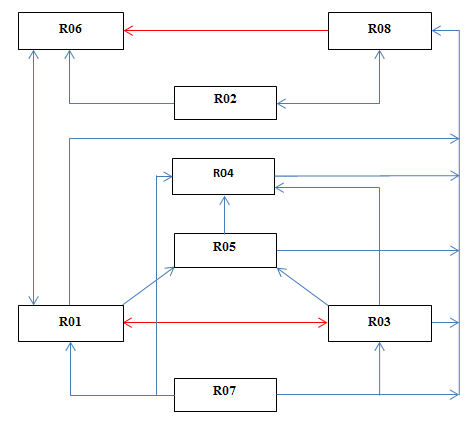
Downloads
Published
How to Cite
Issue
Section
License
Copyright (c) 2025 50SEA

This work is licensed under a Creative Commons Attribution 4.0 International License.

